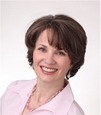Ready or not, here it comes – tax season will be upon us sooner than we may like. Do you remember how things went last year as you gathered your financial paperwork? Will this year be more organized? Did you have to forego some deductions you deserved last year because you couldn’t find the supporting paperwork? Did you have to pay your tax preparer an additional amount to sort out the jumble of information you dumped in his or her office at the last minute? Did you waste hours searching for misplaced financial statements and receipts?
Here are some ideas to help you organize your paperwork, which can save you time as well as money as you pull together your tax documents. There are many ways to organize paperwork, so choose the ideas that resonate with you and adjust the system as needed to fit your needs. Although properly setting up your files may be quite time consuming, you’ll reap the benefits for years to come.
Keep important papers in a fireproof safe or in a safe deposit box. Here’s a link to some information on what you should and shouldn’t keep in a safe deposit box (due to its limited accessibility). http://www.bankrate.com/finance/savings/4-bank-safe-deposit-box-question...
Use a file cabinet or some other type of container to hold your other documents. Office supply stores offer many options, including file carts (which are open on top and typically on wheels), desktop file holders, portable file boxes, crates made specifically for holding files, and even cardboard boxes. Several things to consider when deciding what container to use include: where you will keep it; how easy it is to put papers in it and retrieve papers from it; how secure it will allow your papers to be; and whether or not you’re a “visual” person who would prefer a somewhat open container. To simplify the remainder of this discussion, I’ll assume you’re using a file cabinet. However, my comments are relevant no matter what type of container you use.
Create broad categories to group your papers. If your categories are too specific, you’ll have too many places to search for information. For example, rather than create separate categories for flowers, trees and shrubs, you might want a category called “Gardening.” Be sure to name the categories the way you think of them. For example, if you think in terms of “Car”, don’t file car information under “Auto.”
Use hanging file folders to contain each broad category. Place the folders inside the filing container, and put a well-labeled plastic file tab on the front of the each file. Use a bold, black Sharpie to write the labels, or print them with your computer or a label maker – this will make the file name stand out and easy to read.
Use manila folders inside the hanging folders. If any particular category has a lot of papers in it, manila file folders can help you create sub-categories. For example, for the hanging file folder labeled “Gardening” the manila folders inside could be labeled “Flowers”, “Trees”, and “Shrubs.” The beauty of doing it this way is that all the gardening information is in the same general location so you don’t have to hunt through your files for each sub-category.
Put the most current papers in the front of each folder. This will make the information used most frequently easy to find.
Consider using colored file folders to distinguish various categories. For example, all of the “Financial” files (e.g., Investments, Taxes, Bank Accounts, etc.) can be in green folders; all of the House files (e.g., Mortgage, Maintenance, etc.) can be in blue folders, etc. This will allow you to easily zoom in on the appropriate section of your file cabinet and quickly find the file you want.
Internationally known professional organizer, author, and speaker Sue Becker is the founder and owner of From Piles to Smiles®. She enjoys helping people from around the world live better lives by creating customized systems to overcome their overwhelming paperwork, clutter, and schedules. She specializes in helping people who are chronically disorganized - those for whom disorganization has been a lifelong struggle that negatively impacts every aspect of their life, especially people with AD/HD. Her hands-on help, as well as her presentations, have helped thousands of individuals create substantial change in their lives.
Sue is Illinois’ first Certified Professional Organizer in Chronic Disorganization. She co-authored the book Conversations on Success, and has appeared as an organizational expert on NBC News and the national TV show, Starting Over. A CPA, Sue has an MBA from Northwestern University’s Kellogg Graduate School of Management.

Post new comment
Please Register or Login to post new comment.